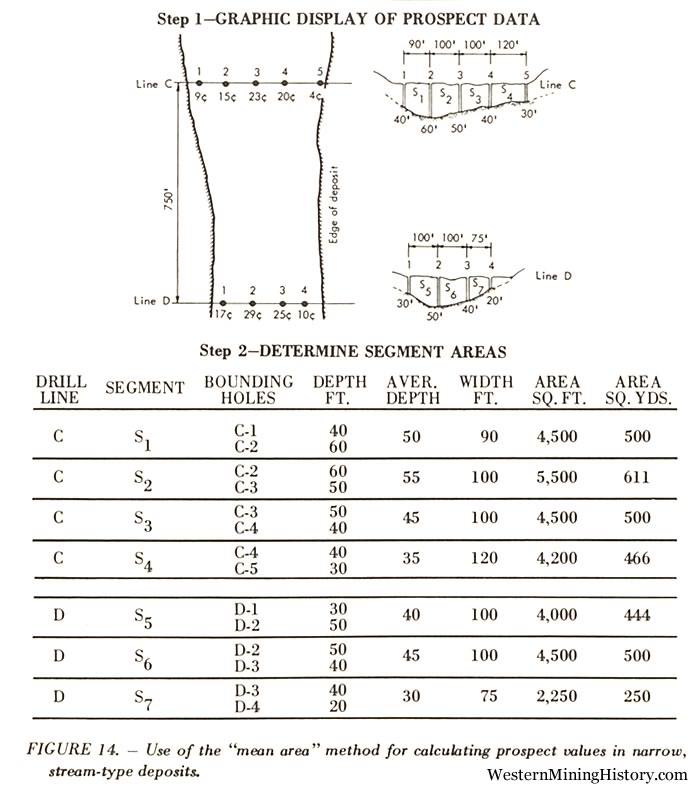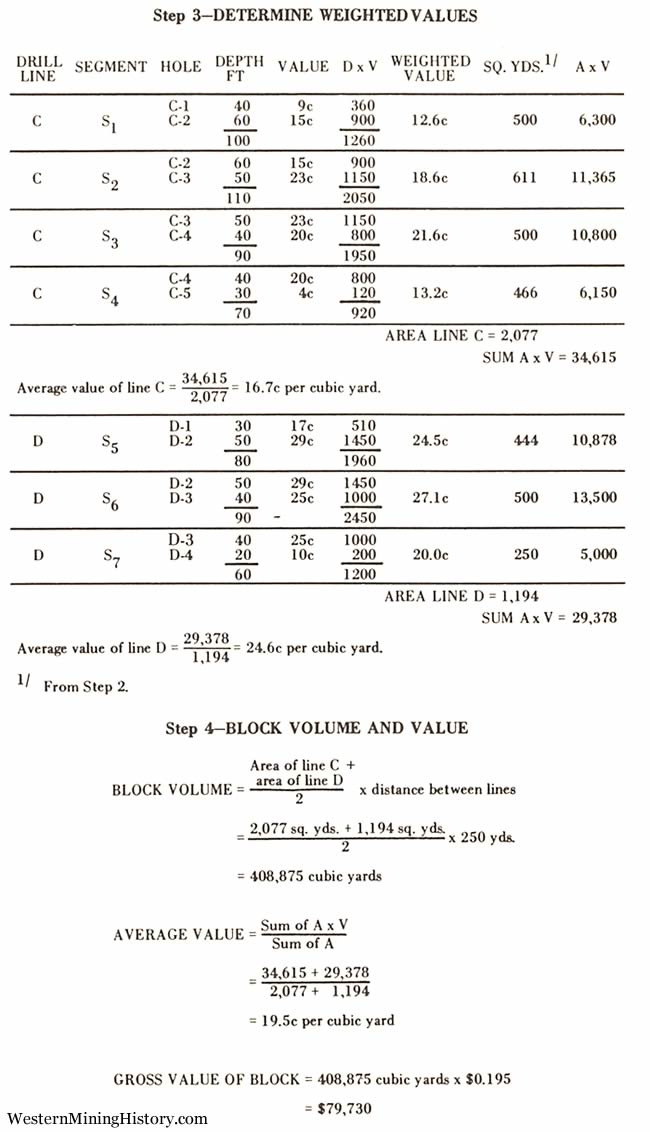-
Drilling rates when figured on a day-to-day or a hole-to-hole basis will be found to vary widely. The variations reflect many factors including moving and set-up time, actual drilling, stuck or lost tools, breakdowns, pipe pulling, etc. To be meaningful, any average figure must take all such contingencies into account, but few do. For those who must make preliminary estimates, a good experience-based figure to use is 10 feet per calendar-day over the life of a drilling project. This may appear conservative but it also reflects an actual average daily (one 8-hour shift per day) footage obtained under a variety of drilling conditions in the United States, Canada and South America.
A word of caution. Where placer drilling is contracted and the contractor's payment is based on footage drilled, there may be a tendency to sacrifice accuracy for speed. Under such conditions the engineer in charge must be constantly alert and he should insist on having full authority over all aspects of the work.
The cost of placer drilling where no unusual problems are encountered will directly reflect the cost of labor. Because of the scarcity of qualified placer drillers and panners, drill crews are hard to find and, as a result, they can demand and usually receive premium wages. Other expenses include the purchase or rental of a drill rig, tools and supplemental equipment such as flatbed and pickup trucks, transportation to the job, supervision, engineering, insurance, fuel, supplies and incidental labor. Today, in the United States the minimum direct cost for operating a standard 6-inch placer churn drill on a one-shift basis will be about $125 per day, based on rental of the drill rig and tools at $50 per day and other expenses. Applying the average figure of 10 feet per calendar day over the life of a project, a minimum cost of $12.50 per foot of drilling is indicated but when incidental expenses are considered, the overall drilling cost may be nearer $15 per foot. A company operation utilizing permanent personnel or a contractor working for an extended period of time could quite possibly lower costs but the point being made here is that placer drilling today, if properly done, is expensive. If improperly done it is worse than useless, as shown by too many cases where inadequate drilling that was intended to save money led to the equipping of sub-economic deposits with resultant loss of large capital investments.
Speaking generally, the churn drill today is too expensive for casual or indiscriminate use as a placer sampling tool but it still offers the only feasible means for sampling some placers.
-
g. Bulk samples: Bulk samples may be called for when dealing with placers having an erratic distribution of values, especially where the pay is found as coarse gold or nuggets. Depending on conditions, samples containing a portion of a cubic yeard, or as much as tens or hundreds of cubic yards may be needed for a reliable estimate of value.
The so-called "plant run" is a form of large-volume bulk sample in which a portion of the deposit is mined and processed under actual working conditions. A pilot plant employing full-scale processing and recovery equipment is sometimes used. But when relying on plant runs, good judgement must be used to insure that the points or areas selected for large-scale sampling actually represent the deposit as a whole, because high costs usually limit this type of testing to a few points.
One school of thought gives great importance to the supposed superior accuracy of bulk samples as compared to smaller samples such as thDse provided by churn drills or channel cuts. While bulk sampling per se is a valid method and bulk samples do, in many cases, offer the most satisfactory method of testing erratic, high-value ground, they are at the same time open to certain criticism. For example, bulk samples must be representative of the deposit, a feat not easily achieved where they are few in number. Another important consideration is the fact that all facets of a bulk sampling program cannot have personal supervision all of the time and, for this reason, salting can be perpetrated with comparative ease. It is important that all such possibilities be considered during the evaluation of bulk sampling results or when considering any actions based on this type of sampling.


Bulk samples are sometimes used to check the reliability of other types. In placer drilling, for example, shafts may be put down over selected drill holes to establish a correction or "shaft" factor which when combined with experience-based judgement can be used as a basis for adjusting the calculated drill values as a whole.